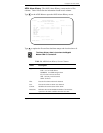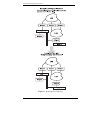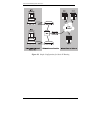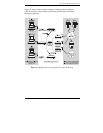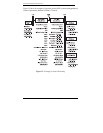
Megabit Modem CRA-C User Manual 51
NETWORK AND MANAGEMENT OVERVIEW
Through the console menus, you can configure the Megabit Modem CRA-C
as a bridge to forward Ethernet data based on MAC addresses or as a router
to route Ethernet data based on IP addresses. Additionally, you can configure
parameters for management and encapsulation protocols using the Megabit
Modem CRA-C console menus.
For information about this topic
Go to page
MAC layer bridging and spanning tree protocol 51
Static IP routing 53
Management protocols 61
Network configuration and image code download 64
Encapsulation protocols 66
MAC Layer Bridging and Spanning Tree Protocol
MAC Layer Bridging.
A bridge moves information across an internetwork
from a source to a destination at the link layer (of an OSI reference model).
The information is sent to a physical address known as a Media Access Control
(MAC) address.
The Megabit Modem CRA-C provides transparent Ethernet MAC level
bridging. It is a completely self-contained bridge with a CPU, memory
subsystems (RAM, Flash, etc.), an Ethernet controller and Ethernet drivers,
and other glue logic. It provides complete main bridging tasks of learning,
forwarding, filtering, and hashing/buffer management. Additionally, it offers
802.1d Spanning Tree protocol, packet encapsulation (via HDLC or PPP
framing), and other local tasks.
Forwarding performance is at 2.7 kpps (kilo packets per second) and filtering
performance is at full Ethernet rate of 14 kpps for 64-byte frames (minimum
size).
Spanning Tree.
Spanning Tree protocol eliminates loops in a LAN topology
by partitioning out redundant links between LAN segments. This ensures that
there is only one path, or link, between any two nodes on the network. If this
link goes down, Spanning Tree enables the partitioned links to create a new
loop-free topology, if possible. An example of the active topology is shown
in Figure 9.







